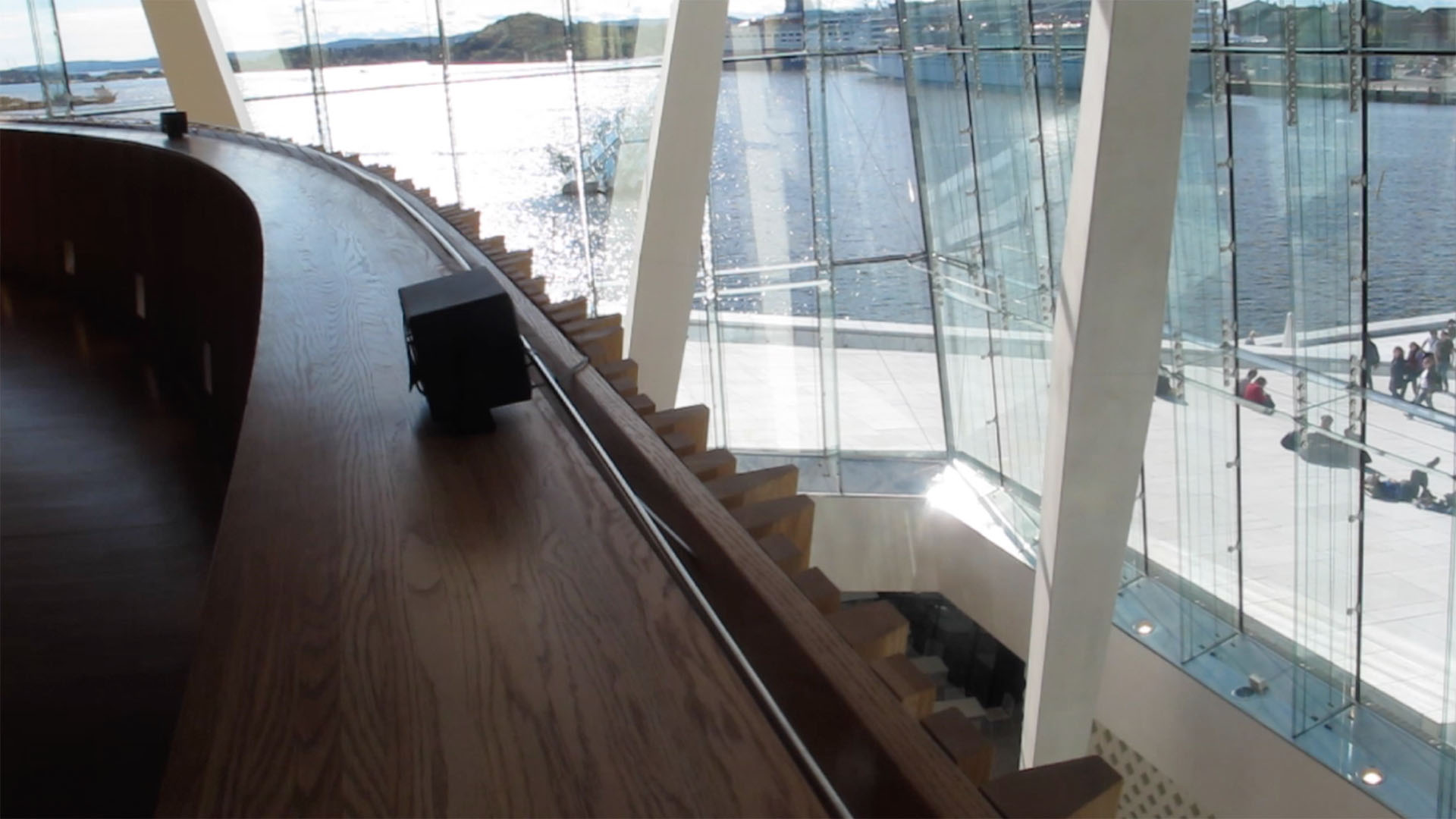
Detail from Åsa Stjernas documentation of the sound installation Currents in the Oslo Opera House.
Sound installations can significantly change people's experience of public places. But it is important that the artist first acquires an understanding of the conditions that are built into the site, and how sound art can change the experience of it. This is examined in a thesis from the Academy of Music and Drama.
Åsa Stjerna uses her own artistic work as the focus of the thesis. For more than ten years she has created sound installations adapted to specific places both in Sweden and abroad. By integrating several speakers in one place, a sounding work is created that the visitor may move through. In the thesis she examines four of these projects:
- Currents, a sound installation based on water currents in the North Atlantic, located in the Oslo Opera foyer (2011).
- Brunnen, an audio installation at the Swedish Institute in Paris (2014).
- A trip to Nairobi, an audio installation in Nairobi that was not implemented (2013).
- Sky down, a sound installation corresponding with the sky outside the Sahlgrenska University Hospital (2017).
Locations as well as sounds differ between the different projects. But Åsa Stjerna's intention in all cases has been to not only explore the conditions that are built into a certain location, but also to investigate what the place could be.
"The projects must be based on the site's unique and often complex conditions. This may, for example, be a matter of how people move on the location in question at certain times of the day. The artist's ability to understand and work with these conditions is a prerequisite for it to be good, she says.
One example is Sky Down, where Åsa Stjerna was already involved at the sketching stage in the construction of a new atrium at Sahlgrenska Hospital in Gothenburg, Sweden. This meant that she could influence the architectural process. In this context, the artwork is the result of a complex process that largely takes place before the actual sound installation is in place.
By developing and artistically exploring a number of approaches and methods in her work, Åsa Stjerna makes visible and questions traditions and assumptions that hindered the understanding of the complex role of sound art in the public space. For example, according to her, it is common to think of the room as an empty container about to be filled with a content. Instead, Åsa Stjerna shows that spaces and, consequently, artistic site-specific work is an interaction between a number of actors: the materials and people who create the place together.
"I hope that the dissertation can contribute to a better understanding of what it means to act as an artist when sound art does not primarily deliver an already predetermined idea, but instead is the result of negotiations with and in harmony with the site's unique and specific conditions.
Thesis title: Before Sound: Transversal Processes in Site-Specific Sonic Practice
Digital publication of thesis and film clips showing three of the sound installations: http://hdl.handle.net/2077/57878
In the film, Åsa Stjerna describes the work of art as a sound experience that is constantly developing in the Sahlgrenska Hospital's atrium. Photographer: Nadim Elazzeh. The film was produced by Västfastigheter.
